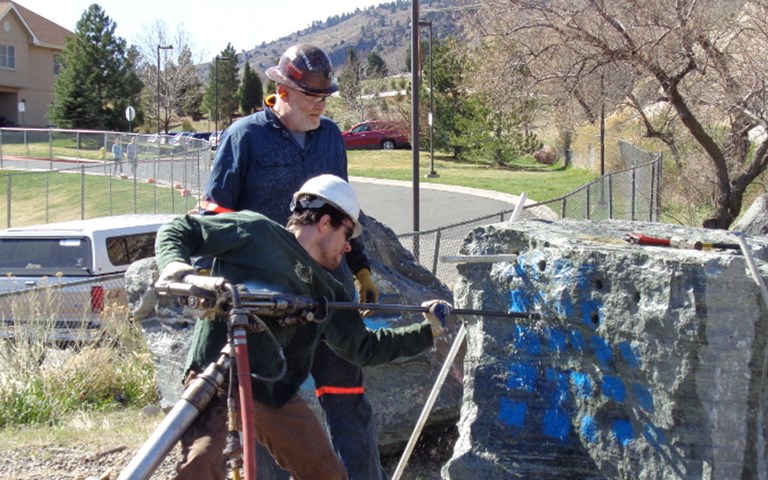Lawrence Clark (top), chief operating officer at Newtrax Technologies, at the Colorado School of Mines Engineering Days. Courtesy of Newtrax Technologies
Lawrence (Larry) Clark is an anomaly in the mining business: an executive who started as an underground miner. It was that first job – at a molybdenum mine near Denver in 1978 – that got him hooked. “I loved blowing things up,” he said. “What 20 year old doesn’t?”
He went back to school to study engineering, determined to combine mining and his growing fascination with technology. Now almost 60, Clark has experienced the transition from giant mainframe computers to PC workstations, and from clunky laptops to tablets and smartphones. Throughout his more than 30-year career, technology has been a constant focus for Clark, including the nearly two decades he spent as senior director of mining technology at Newmont Mining, and, as of this March, as Newtrax Technologies’ new chief operating officer.
In this new capacity, Clark has emerged as a champion for the adoption of technologies that will make mining safer, cleaner and more profitable as the industry changes its tune toward innovation. “The mining industry has finally turned its attitude from one of aversion to technology to the realization that it’s the only way to get beyond the problems we are facing,” he said.
Virtually all of these issues, Clark said – the need to dig deeper, increasingly complex metallurgy and elusive social licenses, among others – revolve around either productivity or safety. These are the two issues Newtrax seeks to address by supplying equipment, software and know-how geared toward tackling the challenges of underground mines.
Adopting new technology will also help attract the young, diverse workforce the industry needs to thrive. Clark spends a lot of time talking to young people about technology, aware that things like artificial intelligence and machine learning are powerful lures in attracting future workers. “We can say to kids, not only can you have a career in [cool] technology that is rewarding, but you’ll be able to ensure that we are making the absolute maximum out of every ounce of diesel, every worker-hour underground, and even save lives. These are all fascinating things to that younger generation, which we need so desperately,” said Clark.
Related: Machine learning projects are catching on throughout the mining industry
But what of employment? Will the mass adoption of these technologies mean fewer workers, especially in the kinds of entry-level jobs that enabled Clark to get his start?
“There will still be entry-level positions, but fewer and fewer as automation takes hold,” he said. “The days of hand-held and manual mining methods are fading into history, so the way I got in the business may disappear. Despite the displacement of low-skilled jobs, humans will still be the ones who design, build, service, commission and decommission these systems. It is important to note that we expect this new workforce to come to the table with curiosity, intelligence and a strong sense of teamwork and collaboration. The fallacy is thinking we are going to need fewer people.”
Discover more of our 2018 Names to Know




